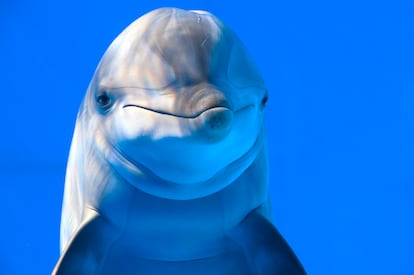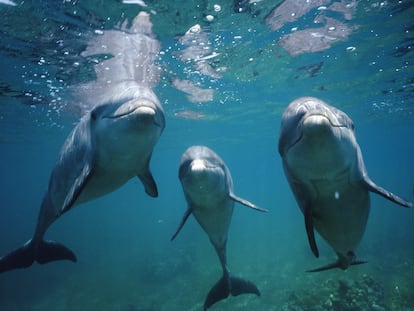Dolphins also have their dark side
Dolphins have a hidden side that is rarely talked about, whose history dates back millions of years when their ancestors walked on land

Although it is most likely untrue, the story goes that Robert Louis Stevenson had a dream ― or rather, he had a nightmare ― in which a doctor experimented with the malevolent side of the human being. This is how legend wanted Stevenson to write the foundational story of the duality of human nature.
Strange Case of Dr. Jekyll and Mr. Hyde was first published in 1886. Since then, it has served as an example whenever it is necessary to underline our dark side, our disturbed nature; an alteration that we can easily transfer to the animal kingdom and, in particular, to dolphins; sociable and communicative animals that feature in the earliest stories of our civilization such of that of Apollo, who took the form of a dolphin to attract a Cretan ship full of merchants so that they would become priests of a sanctuary called Delphi, obviously named in honor of Apollo’s conversion into one of the creatures.
But mythology aside, there are many stories of playful and life-saving dolphins, presented to us as a case of man’s best friend. Just a couple of years ago, a pod of dolphins formed a defensive circle around a swimmer to protect him from a great white shark attack off the coast of New Zealand. A dolphin in the port of Manfredonia saved the life of a 14-year-old boy who, not knowing how to swim, fell into the sea. The dolphin rescued him and delivered him back to the boat.
However, dolphins also have their dark side, a side that is rarely or never talked about, whose history stretches back millions of years when the ancestors of dolphins walked on land. Because all cetaceans are descendants of terrestrial mammals. From that lost world we have some hypotheses. On the one hand, there is talk of mesonychids, carnivorous mammals with wolf-like features that evolved by diving into the ocean. On the other hand the most accurate hypothesis, due to the genetics of both, points to dolphins as descendants of artiodactyls, whose closest relatives would be hippos.
Leaving aside their family tree, it can be assumed that the brain development of these friendly mammals reaches the cruelty of human beings; especially when it comes to playing sinister games such as ball with puffer fish, or with offspring of their own species, until they are killed. Also, like humans, dolphins seek sex for pleasure; for fun they group together in pods and harass females.
In these matters, far from the mesonychids and the artiodactyls, it is possible to find a missing link between the dolphin and the human being. Perhaps Robert Louis Stevenson’s unconscious found it one night of fever and nightmare, reaching the substratum of a world lost in the mists of time.
Sign up for our weekly newsletter to get more English-language news coverage from EL PAÍS USA Edition
Tu suscripción se está usando en otro dispositivo
¿Quieres añadir otro usuario a tu suscripción?
Si continúas leyendo en este dispositivo, no se podrá leer en el otro.
FlechaTu suscripción se está usando en otro dispositivo y solo puedes acceder a EL PAÍS desde un dispositivo a la vez.
Si quieres compartir tu cuenta, cambia tu suscripción a la modalidad Premium, así podrás añadir otro usuario. Cada uno accederá con su propia cuenta de email, lo que os permitirá personalizar vuestra experiencia en EL PAÍS.
¿Tienes una suscripción de empresa? Accede aquí para contratar más cuentas.
En el caso de no saber quién está usando tu cuenta, te recomendamos cambiar tu contraseña aquí.
Si decides continuar compartiendo tu cuenta, este mensaje se mostrará en tu dispositivo y en el de la otra persona que está usando tu cuenta de forma indefinida, afectando a tu experiencia de lectura. Puedes consultar aquí los términos y condiciones de la suscripción digital.











































